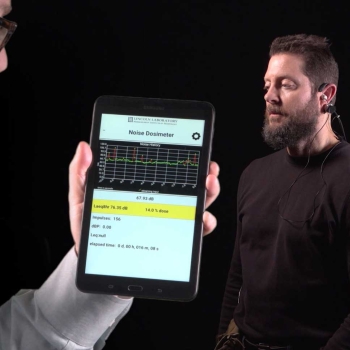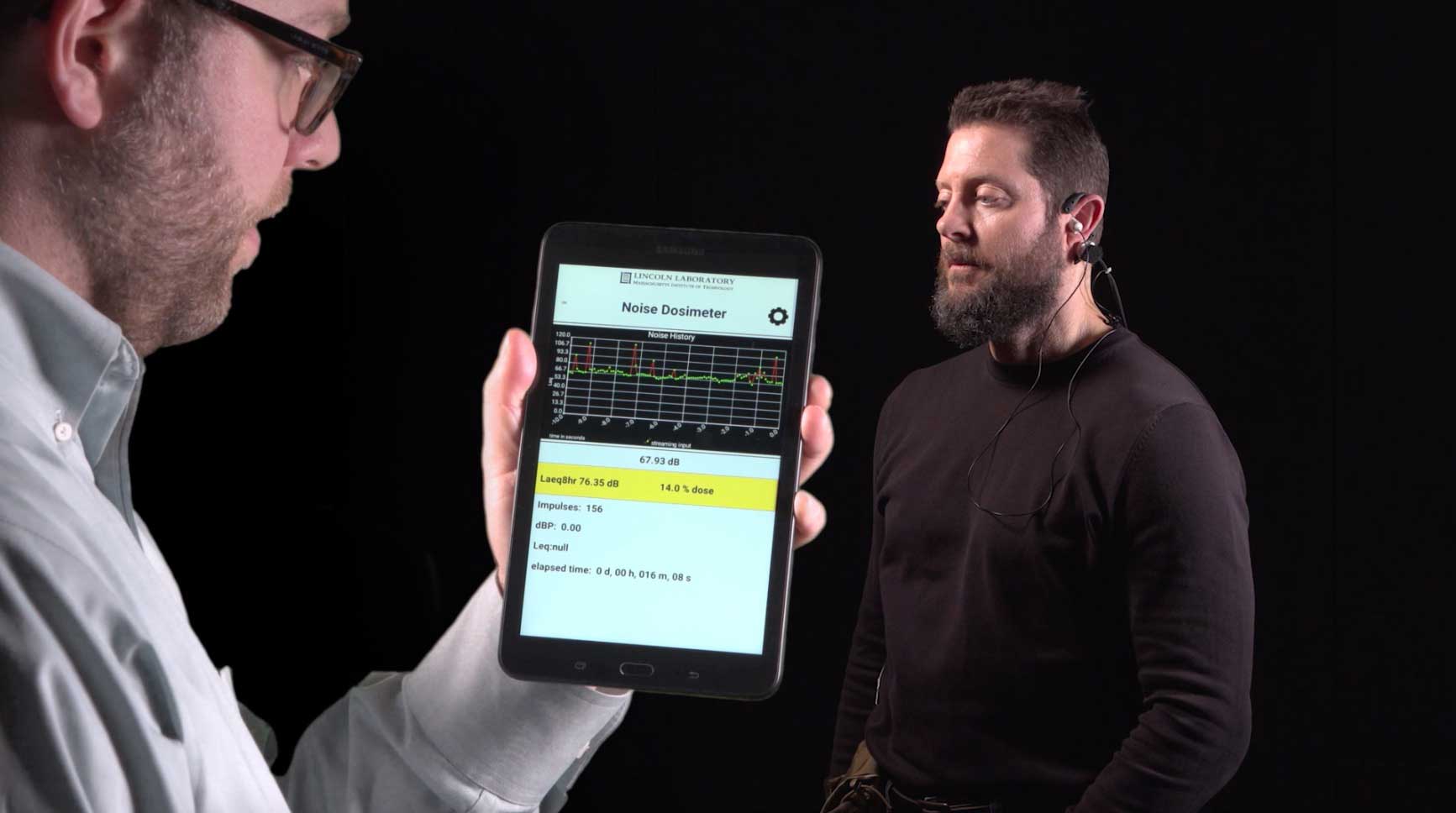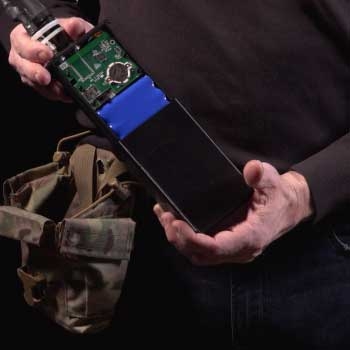Monitoring Noise On-Body and In-Ear for Sound Exposures (MNOISE)

This wearable monitor was developed to enable hearing-loss interventions and identify issues with the fit of hearing protection devices. MNOISE records noise levels, assesses the severity of those levels, and issues real-time alerts to users that they are exposed to harmful levels. A walkie talkie−sized electronic device and microphone worn on the body and small headphone-like microphones in the ears detect noise in an individual's environment and feed the data to algorithms that calculate exposure metrics and estimate damage to the inner ear.

Background
Of the approximately 36 million Americans who have hearing loss, one in three suffered the loss because of exposure to detrimental levels of noise. Typical hearing protection devices detect continuous noise, such as the sustained drone of loud generators, but noisy environments are usually a mix of continuous sounds and impulsive bursts, such as a construction site blast or a deafening bang. These devices also do not take into account the variability in noise exposure as a person or noise source moves. Because most hearing protection devices rely only on measurements of noise levels sensed in ear, they do not sense if the devices are fitting wearers properly.
Lincoln Laboratory Advancement
MNOISE fills in the gaps in the capabilities of common hearing protection devices. MNOISE measures noise generated by different sources and at changing distances from the wearer. These measurements are processed by novel algorithms that calculate exposure metrics, such as continuous sound level, peak sound pressure level, and number of impulses. The metrics are translated to exposure scores based on noise-exposure limits recommended by the National Institute for Occupational Safety and Health, and the Occupational Safety and Health Administration. MNOISE then reports the exposure scores and other metrics to a wearer's mobile device, e.g., smartphone or tablet.
Future Improvements
- Enable active noise cancellation to enhance awareness of surroundings
- Integrate GPS for geolocating and tracking noise exposures
- Add an onboard environmental pressure sensor to improve calculations of noise levels
Benefits
- Measures noise ranging from long-term, persistent sounds (e.g., generators, lawn mowers, traffic) to short-term eruptions (e.g., drilling, jackhammer bursts) to powerful blasts
- Reports noise metrics to the user as an exposure score on a smartphone or tablet
- Sustains a battery life of 12 hours to allow monitoring of long-duration exposures
- Makes on-body and in-ear measurements at both ears to enable the accurate evaluation of the effectiveness of hearing protection devices
Additional Resources
U.S. Patents 10,264,999; 10,225,672
More Information
S. Davis et al., "In-Ear and On-Body Measurements of Impulse-Noise Exposure," International Journal of Audiology, 58: supp. 1, Feb. 2019.
